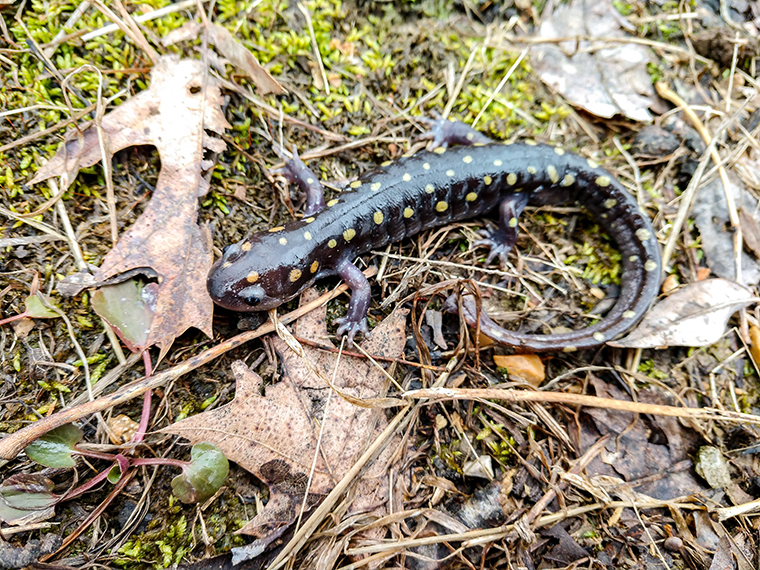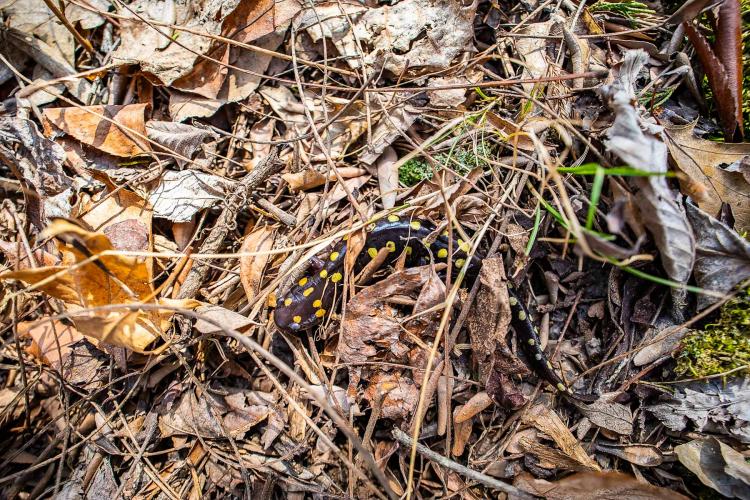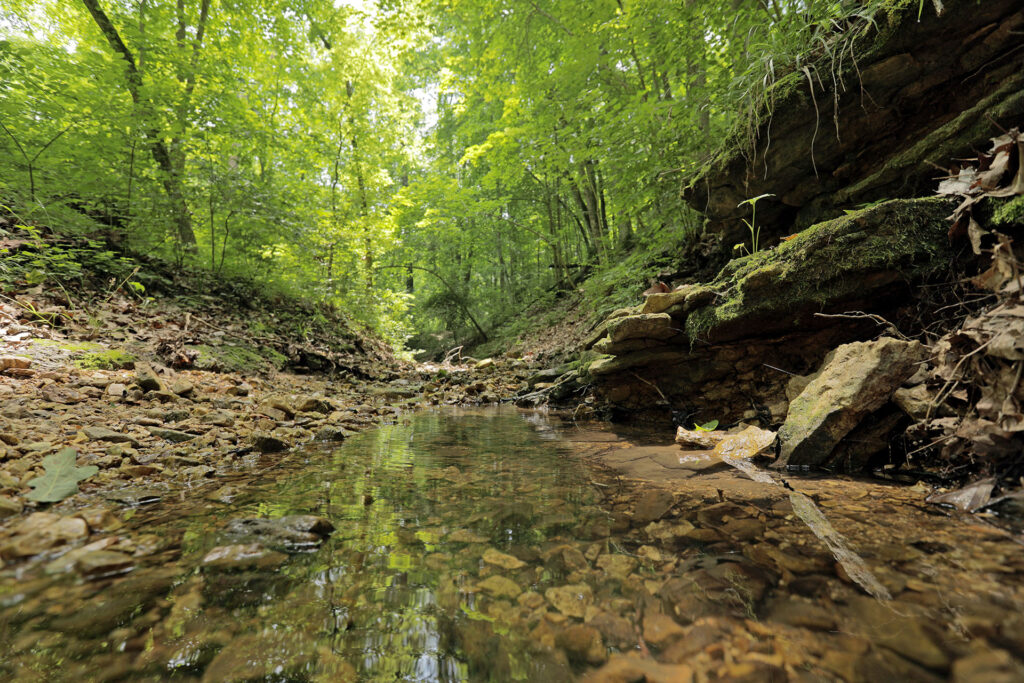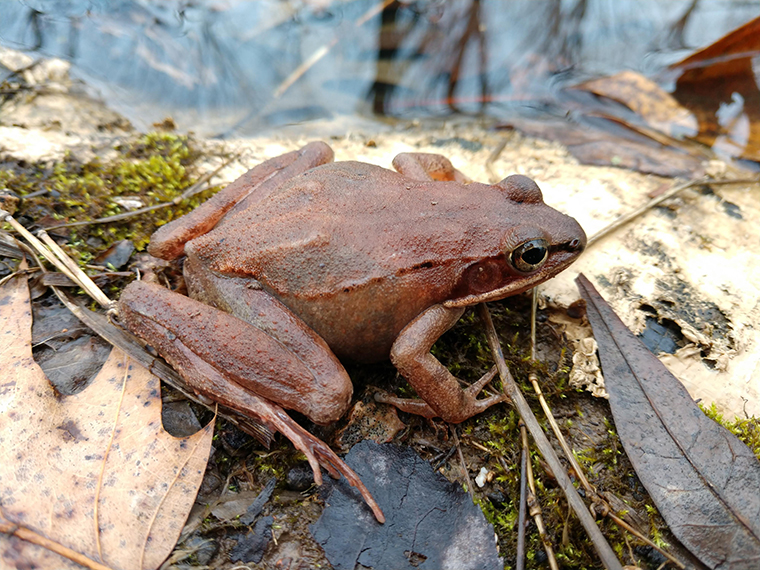It's a big night for spotted salamanders. Normally secretive and rarely seen, the salamanders emerge by the hundreds from their underground burrows to gather at breeding ponds at Tyson Research Center, Washington University in St. Louis' environmental field station.

Breeding happens on just a handful of days each spring, after the first warm rains fall. This year, a lot of the action happened the first week of March. Scientists are now tracking these salamander soirees more carefully, as part of a larger research effort that is examining the impacts of climate change on the timing of major life events, like breeding, for amphibians and other animals and plants.
"We just began our first pilot year of a long-term project that looks at the emergence of wood frogs, spotted salamanders and different tree species," said Elizabeth Biro, Tyson's natural resources coordinator and staff scientist. "By examining how the timing of major life events for these species may be shifting, we can begin to understand some of the environmental drivers behind those shifts.
"These amphibian species are very elusive for most of the year since they mostly live under leaf litter and underground, but they become visible once they make their journey to their breeding ponds," she said. "They take a lot of cues from their environment to know when to make this journey, so knowing what is happening in the surrounding forest can be very insightful."
Pond power
It wasn't always a given that salamanders would choose Tyson as their home. When the 2,000-acre property was acquired by the university in 1963, it had been altered by decades of mixed land use, including during World War II, when the federal government built bunkers and stored munitions and explosives on site.

Under the leadership of former director Owen Sexton, six small ponds were constructed at Tyson from 1965 to 1979 in the oak-hickory forest that now dominates the landscape. Researchers populated the ponds at Tyson with egg masses of wood frogs and spotted salamanders: the salamanders were introduced from a nearby 900-acre conservation area called Forest 44, and the wood frogs came from a pond about 50 miles away.
Sexton, who was also a professor of biology in Arts & Sciences, and his team carefully charted their populations from 1974 for the salamanders and 1987 for the wood frogs. In 1999, the team reported that the frogs, which had basically disappeared in eastern Missouri, and spotted salamanders, which had been greatly reduced, had come back with a flourish at Tyson.
"Both populations are healthy and show no signs of decline," Sexton said at the time. "I think we've shown that not all amphibian populations are at risk and that if habitats can be preserved - if not created - then conditions can be favorable for amphibians to thrive."

Amphibian audit
Fast-forward almost 25 years, and others are not necessarily so bullish about the outlook for amphibians.
Conservation biologists have reported alarming declines in amphibian populations in various parts of the world, mostly driven by habitat loss and landscape fragmentation. And very recently, the deadly chytrid fungus has wiped out as many as 90 species of amphibians.

The salamanders and frogs at Tyson cannot be shielded from all of today's threats. But they do have a relatively safe place to lay low in the damp hardwood forest under the researchers' watchful eyes.
"We've been doing amphibian monitoring for some years now," Biro said. "But we didn't know how populations at Tyson compared to other sites regionally and across the country. We already know that the ponds are 'successful,' since they seem to be overflowing with these species every spring."
She said that Tyson scientists were excited to join the Vernal Pool Phenology Project this spring to tie into a larger research network and add to climate change knowledge.
"Tyson is an interesting point in this network because we are the furthest west and south, and our populations were introduced or at least enhanced," Biro said. "Anecdotally, I think the reintroductions were a success (even more so because of the 12 ponds we built at Tyson in 2008). But I don't have any real data to say that for certain.
"We've just started thinking about this again, how Owen's legacy started this cool Tyson phenomenon," she said. "But what does success really mean? How we can measure it, and what more we can learn about these species? Field stations are the perfect places to conduct these types of long-term projects."






